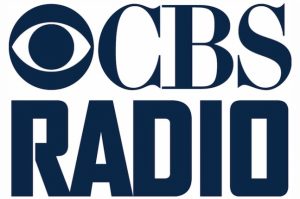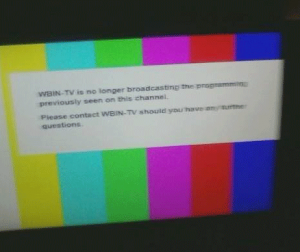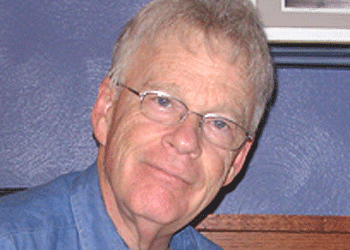The Year’s Top Ten Stories
By SCOTT FYBUSH
 It’s time once again for our Year in Review, the 24th time we’ve gathered up our headlines from the previous 12 months and tried to sum it all up for you. Year in Review installments will appear daily through our wrap-up on Monday, January 1, so check back every day for a new installment. We’ll resume our regular NorthEast Radio Watch report on Tuesday, January 2, 2017. (And in the meantime, our own Twitter and Facebook feeds and RadioInsight will be here with any breaking news!)
It’s time once again for our Year in Review, the 24th time we’ve gathered up our headlines from the previous 12 months and tried to sum it all up for you. Year in Review installments will appear daily through our wrap-up on Monday, January 1, so check back every day for a new installment. We’ll resume our regular NorthEast Radio Watch report on Tuesday, January 2, 2017. (And in the meantime, our own Twitter and Facebook feeds and RadioInsight will be here with any breaking news!)
Error, group does not exist! Check your syntax! (ID: 26)
The fourth installment of our Year in Review (catch up on yesterday’s installment here) spotlights what were, in our opinion, the biggest stories of the year across the region we cover. Think we left something out? Weigh in below in the comments…
1. Entercom and CBS Radio
 Some years, it’s hard to settle on a top story. In 2017, it was a no-brainer. Any sale of huge radio clusters in New York, Philadelphia and Boston would have qualified for the top slot on our year-end list by itself. As part of a nationwide deal, and one that closed out the dual legacies of CBS’ 90-year radio history and nearly a century of unbroken ownership going back to Westinghouse/Group W, Entercom’s “Reverse Morris Trust” merger/takeover of CBS Radio will likely make the top of our “stories of the decade” list, if we’re still around in 2021.
Some years, it’s hard to settle on a top story. In 2017, it was a no-brainer. Any sale of huge radio clusters in New York, Philadelphia and Boston would have qualified for the top slot on our year-end list by itself. As part of a nationwide deal, and one that closed out the dual legacies of CBS’ 90-year radio history and nearly a century of unbroken ownership going back to Westinghouse/Group W, Entercom’s “Reverse Morris Trust” merger/takeover of CBS Radio will likely make the top of our “stories of the decade” list, if we’re still around in 2021.
We knew, going into 2017, that CBS Corp. wanted to unload its local radio assets around the country – with 20/20 hindsight, it’s been clear for a few years that CBS had been expending little to no resources in growing those assets, spending almost nothing on research, for instance. The spring brought the identity of the buyer: Entercom, well-established as a solid medium-sized player, poised to grow under David Field into a major national player as it entered most of the top-10 markets (including New York and its hometown of Philadelphia) for the first time.
 Then came the speculation: which stations would have to be spun off, and to which other players? (More on that below). And then, in November, the handover: a few managers were replaced (most notably in New York), a few formats tweaked (we’ll see in 2018 whether “Alt” is a recipe for success where Entercom has installed it in New York and elsewhere), and a lot of status quo retained where CBS’ strategies were already working well. (Would you mess with 1010 WINS?)
Then came the speculation: which stations would have to be spun off, and to which other players? (More on that below). And then, in November, the handover: a few managers were replaced (most notably in New York), a few formats tweaked (we’ll see in 2018 whether “Alt” is a recipe for success where Entercom has installed it in New York and elsewhere), and a lot of status quo retained where CBS’ strategies were already working well. (Would you mess with 1010 WINS?)
The split of the radio stations division from the rest of CBS had other consequences, too. What had been “CBS Radio News” became “CBS News Radio” as it stayed with CBS Corp. – but with buyouts and retirements claiming many of its veteran staffers.
Looking ahead into 2018, we’ll be watching to see whether Field’s big bet pays off. Will Entercom succeed in its industry-wide attempt to grow radio’s share of the total advertising pie? Can it accomplish what has long eluded other players (including CBS itself, years ago) and successfully balance the needs of top-10 market stations against its smaller clusters in places like Scranton and Buffalo? And with CBS out of the radio picture, what will be the fate of two other giants with shaky finances – Cumulus and iHeart?
1a. iHeart and Beasley Reshuffle Boston
It’s not even “story #2,” because it’s really a big part of “story #1.” However you label it, the fallout from the Entercom/CBS Radio deal in Boston was a huge part of our 2017 coverage all by itself.
For a deal as big as this one was, there was surprisingly little overlap: Entercom’s medium-market strategy had largely kept it away from CBS Radio’s focus on top-20 markets. Some markets – Los Angeles on the “huge” side and Scranton on the “small” side – needed only one station to be spun. Seattle, San Francisco and Sacramento all posed bigger complications. None, however, was as complex as Boston, where both CBS and Entercom already had major shares of the market’s revenue – and where, between them, they enjoyed total control of sports-talk radio and near-total control of spoken-word news and talk on the commercial side.
 That meant the Justice Department had to get involved, leading to a set of spinoffs and swaps that exceeded even our attempts to envision how complex it could all get. Despite its brushes with bankruptcy, iHeart entered the picture in a big way, filling out its cluster with CBS Radio’s all-news WBZ (1030) and classic rock WZLX (100.7) and Entercom’s talk WRKO (680) and R&B WKAF (97.7). That left Entercom with only two stations from CBS (top-40 WODS and AC WBMX), once it carried out a surprise swap with Beasley for AC WMJX in exchange for “Sports Hub” WBZ-FM.
That meant the Justice Department had to get involved, leading to a set of spinoffs and swaps that exceeded even our attempts to envision how complex it could all get. Despite its brushes with bankruptcy, iHeart entered the picture in a big way, filling out its cluster with CBS Radio’s all-news WBZ (1030) and classic rock WZLX (100.7) and Entercom’s talk WRKO (680) and R&B WKAF (97.7). That left Entercom with only two stations from CBS (top-40 WODS and AC WBMX), once it carried out a surprise swap with Beasley for AC WMJX in exchange for “Sports Hub” WBZ-FM.
The dust hasn’t fully cleared yet, especially where physical studio facilities are concerned – but the grand outlines of the next chapter in Boston radio are now visible, with three big clusters (Entercom, iHeart, Beasley) where once there had been four (CBS, Entercom, Greater Media/Beasley, iHeart). Can Beasley play in the sports arena against Entercom, which is now the nation’s dominant sports-radio player? Will Entercom make FM format changes now that it has WODS, WBMX and WMJX all under the same corporate roof?
And, of course, the biggest question: how will all-news WBZ fare under iHeart, which has no comparable formats anywhere else in its portfolio? Its unionized newsroom employees rallied advertisers and listeners to beat back iHeart’s initial attempt to wipe out their jobs and seniority. But as iHeart managers reportedly told the union WBZ was “a Ferrari,” they dismissed the top Ferrari manager in the garage, sending veteran PD Peter Casey out after three decades. Can iHeart keep WBZ running smoothly in 2018 with Toyota mechanics at the helm?
3. Repack Money Gets Big
 On the TV side of the ledger, the winners won very big indeed as the TV spectrum repack handed out checks that ran well into nine figures for a few lucky broadcasters. Whether it was Bill Binnie’s WBIN in New Hampshire, top-tier outlets like Comcast’s WNBC in New York, third-tier stations like TBN’s WTBY in Poughkeepsie or WGTW in Philadelphia, or even low-powered signals like the former BGN stations around Pittsburgh, some owners ended 2017 with ample rewards for their years on the air. (Others, like CBS and Fox, chose not to play in the auction and instead gambled on keeping all of their spectrum, hoping it will pay off in the eventual transition to the new ATSC 3.0 broadcast standard.)
On the TV side of the ledger, the winners won very big indeed as the TV spectrum repack handed out checks that ran well into nine figures for a few lucky broadcasters. Whether it was Bill Binnie’s WBIN in New Hampshire, top-tier outlets like Comcast’s WNBC in New York, third-tier stations like TBN’s WTBY in Poughkeepsie or WGTW in Philadelphia, or even low-powered signals like the former BGN stations around Pittsburgh, some owners ended 2017 with ample rewards for their years on the air. (Others, like CBS and Fox, chose not to play in the auction and instead gambled on keeping all of their spectrum, hoping it will pay off in the eventual transition to the new ATSC 3.0 broadcast standard.)
Once the auction proceeds had been disbursed, the industry entered a new and surprising chapter. Even after selling off spectrum, some owners found another revenue stream in selling their “zombie licenses” to other broadcasters looking for additional bites at cable must-carry – or in donating them to public broadcasters for tax writeoffs.
In the last weeks of 2017, and into 2018, the “rescan” buttons started to get active in auction markets as many of these stations moved to their new channel-share hosts.
(Other markets, meanwhile, had little or no auction action, leaving broadcasters to get busy filing their repack plans as they look ahead to the UHF repack process that won’t get started in earnest until 2019.)
4. Harassment Allegations Hit Public Radio
 As the #metoo wave swept across the worlds of entertainment and media, it was no great surprise when several names from radio found themselves accused of sexual harassment and quickly pulled from the air. Commercial TV came first – Matt Lauer and Charlie Rose on the national level – but it was public radio’s turn next. At WNYC in New York, veteran talk host Leonard Lopate and standards host Jonathan Schwartz both fought back publicly against their suspensions and what they called unfair investigations, but within weeks both were fired anyway. Up the road at WBUR in Boston, “On Point” host Tom Ashbrook was suspended from his national gig amidst a welter of allegations about abusive behavior at work.
As the #metoo wave swept across the worlds of entertainment and media, it was no great surprise when several names from radio found themselves accused of sexual harassment and quickly pulled from the air. Commercial TV came first – Matt Lauer and Charlie Rose on the national level – but it was public radio’s turn next. At WNYC in New York, veteran talk host Leonard Lopate and standards host Jonathan Schwartz both fought back publicly against their suspensions and what they called unfair investigations, but within weeks both were fired anyway. Up the road at WBUR in Boston, “On Point” host Tom Ashbrook was suspended from his national gig amidst a welter of allegations about abusive behavior at work.
Commercial radio, meanwhile, chugged along largely immune, it appeared. While just about anyone who’s worked in a radio station has stories, there was little actual backlash, save for one Denver DJ whose countersuit against Taylor Swift went rather badly.
Error, group does not exist! Check your syntax! (ID: 26)
5. WBRU Students Sell FM
 One of the longer-running ownership dramas in New England came to a rather speedy close in July when the Brown University students and alumni who control Brown Broadcasting Service voted to sell the big signal of WBRU (95.5 Providence).
One of the longer-running ownership dramas in New England came to a rather speedy close in July when the Brown University students and alumni who control Brown Broadcasting Service voted to sell the big signal of WBRU (95.5 Providence).
While reports would later emerge of attempts by university leadership to provide a loan and stop the sale, the BBS board pushed forward quickly, pulling in $5.63 million (less than many had expected) for the 95.5 signal from EMF Broadcasting, which wasted no time flipping it to K-Love as WLVO.
As for WBRU’s future? While it continued as a stream, attempts to relaunch some form of WBRU as a low-power FM station had yet to bear fruit at year’s end.
(And an even longer-running ownership drama, Pacifica’s WBAI in New York, had its own year of troubles, concluding with a court judgment upholding the Empire State Building’s claim to more than a million dollars in back rent. The outcome of that drama promises to be a big story entering 2018 as WBAI fights to stay on the air, somehow.)
6. WFAN Reworks its Lineup
 There was one huge CBS Radio story in 2017 that had nothing at all to do with Entercom: no matter who was in the owner’s chair, iconic WFAN afternoon host Mike Francesa had long made it clear he was ready to move on after 30 years’ time inventing the entire concept of sports talk radio. Nor did the ownership change have anything to do with the very unexpected charges against morning co-host Craig Carton, quickly ousted from the lineup as he faced accusations of running a ticket-resale Ponzi scheme outside the station.
There was one huge CBS Radio story in 2017 that had nothing at all to do with Entercom: no matter who was in the owner’s chair, iconic WFAN afternoon host Mike Francesa had long made it clear he was ready to move on after 30 years’ time inventing the entire concept of sports talk radio. Nor did the ownership change have anything to do with the very unexpected charges against morning co-host Craig Carton, quickly ousted from the lineup as he faced accusations of running a ticket-resale Ponzi scheme outside the station.
Be that as it may, the need to reinvent one of the most profitable pieces of the entire CBS Radio empire was still a critical project for the new Entercom management. In the new year, Francesa’s shift will be filled by a new three-person show with Chris Carlin, Bart Scott and Maggie Gray. In the morning slot, Greg Giannotti slides over from CBS Sports Radio to become Boomer Esiason’s permanent co-host after months of fill-ins.
Will one of Entercom’s biggest cash cows stay vibrant and profitable with these new shows? If nothing else, the use of multiple voices in the studio protects against major disruptions in the event of another incident like Carton’s – it’s easier to replace one leg of a stool than a solo voice like Francesa was. (Will we ever see a show like his again?)
7. Venerable AMs Hit a Dead End
If you’re a fan of the romance of radio history, you’re in good company here. But romance doesn’t pay power bills, repair aging ground systems or outweigh the value of big plots of land for commercial development.
That cold reality hit a growing number of venerable AM stations over the course of 2017. In Albany, the old WPTR (1540, now WDCD) once again fell silent after Crawford Broadcasting told the FCC it couldn’t afford to keep running at a full 50,000 watts. WDCD’s plea to be allowed to run at lower power hit an FCC snag – the Commission doesn’t allow Special Temporary Authority to be used just to lower power for economic reasons – and so for now the signal is simply dark.
Boston’s WMEX (1510) made big headlines when it went silent over the summer as owner Daly XXL became the latest to find it couldn’t make money against one of the more onerous tower-site leases out there. A December auction didn’t produce bidders, but South Shore owner Ed Perry stepped forward with a much lower offer to buy the station and move it away from its troublesome Waltham tower site.
 Pittsburgh’s KQV (1410) was due to fall silent at the very end of the year after the deaths of several members of the Dickey family that had long operated it; we’re still awaiting word of a possible buyer to try to rescue the station, though likely at a site other than its old North Side five-tower array, which sits on land that’s become more valuable than the license.
Pittsburgh’s KQV (1410) was due to fall silent at the very end of the year after the deaths of several members of the Dickey family that had long operated it; we’re still awaiting word of a possible buyer to try to rescue the station, though likely at a site other than its old North Side five-tower array, which sits on land that’s become more valuable than the license.
WGHT (1500 Pompton Lakes NJ) was donated to the town after falling silent, with its future uncertain; across the state line, WRCR (1700 Pomona NY) lost its transmitter site and its ballpark-based studio, with little visible local reaction to its months of silence that resulted.
Heading into 2018, the question isn’t “will more old-line AMs follow suit?,” it’s “which ones will be next?” And with the FCC winding down its AM translator windows with one more free-for-all at the end of January, it looks ever more likely that there will soon be a second tier of AMs that will be left without a translator, or any chance of adding one.
(And yes, at Fybush Media we’re still working with broadcasters who don’t want to miss that last chance…)
8. Last Local Owners Fade Away
 A process that started even before the Telecommunications Act of 1996 – the consolidation of local TV ownership – wound into its final chapters two decades later as the region said farewell to some of its last holdouts. Up in Vermont, the Martin family put what’s now WCAX (Channel 3) on the air back in 1954 and stewarded the station through 63 years of ratings and revenue dominance. The same was true over in Bangor, where Gov. Horace Hildreth’s family founded WABI-TV a year earlier and had been running it ever since. The sale of both stations to Gray Television completed the corporatization of local network affiliates around the northeast; so far, it hasn’t diminished much of what made those stations special. (One tradition did end at year’s end at WCAX, where the transmitter site high atop Mount Mansfield went unattended after 63 years of full-time staffing up at the peak.)
A process that started even before the Telecommunications Act of 1996 – the consolidation of local TV ownership – wound into its final chapters two decades later as the region said farewell to some of its last holdouts. Up in Vermont, the Martin family put what’s now WCAX (Channel 3) on the air back in 1954 and stewarded the station through 63 years of ratings and revenue dominance. The same was true over in Bangor, where Gov. Horace Hildreth’s family founded WABI-TV a year earlier and had been running it ever since. The sale of both stations to Gray Television completed the corporatization of local network affiliates around the northeast; so far, it hasn’t diminished much of what made those stations special. (One tradition did end at year’s end at WCAX, where the transmitter site high atop Mount Mansfield went unattended after 63 years of full-time staffing up at the peak.)
Down the road from WCAX, an even longer thread of family ownership began winding down: WDEV in Waterbury, Vermont and its sister stations have been part of the Squier family since 1935, so it was big news when Ken Squier put them up for sale. While a transfer to veteran talent/sales exec Steve Cormier was quickly announced, no sale had been filed at the FCC by year’s end.
Elsewhere in radio, some new local owners emerged – and whether it was the Landry brothers’ new Sugar River group in the Upper Valley or Buddy Shula at WECK in Buffalo, we wish them many years of success as new broadcast owners.
9. World Trade Lights Up
 After 16 years, television broadcasting returned to 1 World Trade Center with the autumn sign-on of Telemundo’s WNJU (Channel 47/RF 36), the first station to light up from the new master UHF antenna more than 1700 feet above lower Manhattan.
After 16 years, television broadcasting returned to 1 World Trade Center with the autumn sign-on of Telemundo’s WNJU (Channel 47/RF 36), the first station to light up from the new master UHF antenna more than 1700 feet above lower Manhattan.
WNJU’s move downtown was quickly followed by other stations ready to take advantage of a higher perch and more robust backup power than they’d enjoyed uptown at the Empire State Building, where TV had been squeezed back in after 9/11. WNJU itself became the channel-sharing host to sister WNBC later in the fall, followed by sign-ons from WCBS-TV (Channel 2/RF 33) and ion’s WPXN (Channel 31), with public broadcaster WNET and Fox’s WNYW and WWOR joining them in 2018.
(FM, however, remained in midtown; with the Empire FMs newly invested in a 19-station auxiliary combiner and antenna system, there seemed little appetite from radio broadcasters to look south to 1 World Trade.)
10. North Country Cluster Splinters
 It happened on a much smaller scale than most of the year’s other top stories, but the slow collapse of a local radio group way up north was one of those things radio people just couldn’t look away from. Ted Morgan’s Saranac Lake Radio group once dominated local broadcasting south of Plattsburgh, including the region’s oldest station (WNBZ 1240) and one of its biggest signals (WYZY, later WNBZ-FM, on 106.3), as well as an established group of Lake Placid-based stations with two FMs and an AM.
It happened on a much smaller scale than most of the year’s other top stories, but the slow collapse of a local radio group way up north was one of those things radio people just couldn’t look away from. Ted Morgan’s Saranac Lake Radio group once dominated local broadcasting south of Plattsburgh, including the region’s oldest station (WNBZ 1240) and one of its biggest signals (WYZY, later WNBZ-FM, on 106.3), as well as an established group of Lake Placid-based stations with two FMs and an AM.
In recent years, though, the stations had fallen on hard, hard times. The AM in Lake Placid (WIRD 920) went silent, the WNBZ studios and tower site in Saranac Lake almost got claimed in a sale for unpaid taxes, the Lake Placid FMs (WRGR 102.1 and WLPW-FM 105.5) had technical problems and WYZY faced allegations of operation from an unlicensed site.
By mid-2017, all but WNBZ-FM had gone silent, with 106.3 barely kept alive with stale automation, its Plattsburgh studio vacant. For once, the local newspaper not only took notice but did some intelligent reporting that got noticed – which means the Adirondack Daily Enterprise is probably at least somewhat to credit for getting some of Morgan’s licenses into the hands of new owners. The WNBZ AM license went to crosstown competitor WSLP (93.3), while former employees of Plattsburgh’s WIRY came up with a plan to take over WNBZ-FM and restore it to local prominence.
It wasn’t the only “local heroes try to save beloved station” story – a tip of the hat, here, to Jimmy Buff and Peter Buffett’s well-financed nonprofit attempt to revive WKNY in Kingston – but it’s nice to end the year with the hope that these delightful communities up in the Adirondack will still have vibrant radio into 2018 and beyond.
(We’ll wrap up our Year in Review coverage Monday with a comprehensive look at the year in radio and TV obituaries.)
Error, group does not exist! Check your syntax! (ID: 26)
> > > Coming Monday, Jan. 1: Those We Lost
SPRING IS HERE…

And if you don’t have your Tower Site Calendar, now’s the time!
If you’ve been waiting for the price to come down, it’s now 30 percent off!
This year’s cover is a beauty — the 100,000-watt transmitter of the Voice Of America in Marathon, right in the heart of the Florida Keys. Both the towers and the landscape are gorgeous.
And did you see? Tower Site of the Week is back, featuring this VOA site as it faces an uncertain future.
Other months feature some of our favorite images from years past, including some Canadian stations and several stations celebrating their centennials (buy the calendar to find out which ones!).
We still have a few of our own calendars left – as well as a handful of Radio Historian Calendars – and we are still shipping regularly.
The proceeds from the calendar help sustain the reporting that we do on the broadcast industry here at Fybush Media, so your purchases matter a lot to us here – and if that matters to you, now’s the time to show that support with an order of the Tower Site Calendar. (And we have the Broadcast Historian’s Calendar for 2025, too. Why not order both?)
Visit the Fybush Media Store and place your order now for the new calendar, get a great discount on previous calendars, and check out our selection of books and videos, too!


















